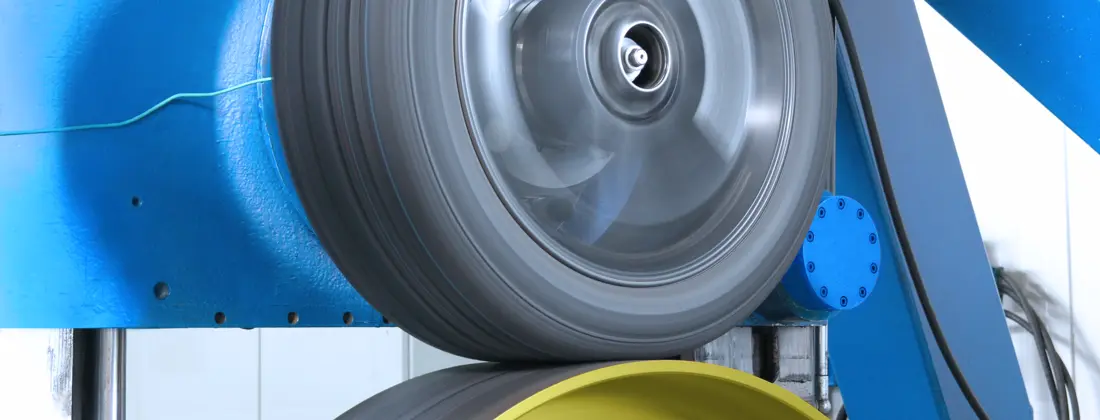GB T4505 Tyre Wet Grip Braking Performance Test
The GB/T 4505 test is a crucial procedure in tyre manufacturing and quality assurance, specifically designed to evaluate the wet grip braking performance of tyres. This test measures how effectively a tyre can stop on a wet surface compared to dry conditions. It plays an essential role in ensuring that tyres meet stringent safety standards.
The test involves several key parameters including the friction coefficient (μ), which is measured using a skid pad apparatus. The μ value indicates the sliding resistance between the tyre and the road surface, providing insights into how well the tyre can stop on wet roads. This information is vital for both consumer safety and regulatory compliance.
The GB/T 4505 test is particularly important for tyres intended for use in regions with frequent rain or high humidity. Wet grip braking performance directly impacts road safety, as poor performance increases the risk of accidents due to longer stopping distances. The test helps manufacturers optimize their tyre designs and materials to ensure they meet international standards.
During the test, a controlled skid pad is used where tyres are subjected to uniform lateral force while sliding on a wet surface. This setup allows for precise measurement of friction coefficients under defined conditions. The results from this test are critical in determining whether a tyre can perform adequately in real-world scenarios.
It's important to note that the GB/T 4505 standard is not just limited to passenger tyres; it also applies to commercial vehicles, buses, and trucks. This broad applicability ensures that all types of tyres are held to the same high safety standards regardless of their intended use.
The test procedure involves several steps:
- Preparation of the tyre according to specified conditions (temperature, inflation pressure).
- Placement of the tyre on a skid pad apparatus.
- Application of controlled lateral force while measuring friction coefficients.
- Recording and analysis of results.
The results from this test are compared against industry benchmarks to ensure that tyres meet the required safety standards. These standards are crucial for consumer confidence and regulatory compliance.
Industry Applications
- Tire Manufacturers: Utilize GB/T 4505 to ensure that their tyre designs meet the highest safety standards, particularly in wet weather conditions.
- R&D Engineers: This test is essential for continuous improvement and innovation in tyre technology.
- Safety Organizations: Use these results to set benchmarks for tyre performance across various regions.
- Automotive Manufacturers: Ensure the tyres they use meet the necessary standards, enhancing overall vehicle safety.
Eurolab Advantages
Eurolab offers comprehensive GB/T 4505 testing services with state-of-the-art facilities and experienced technicians. Our services are designed to meet the highest industry standards, ensuring accurate and reliable results.
We provide detailed reports that include all relevant test parameters, making it easier for our clients to interpret and act on the data. Our commitment to quality control ensures that every test is conducted under optimal conditions, leading to consistent and repeatable results.
Our expertise in this field also allows us to offer additional services such as consultation on tyre design optimization based on test results. This can help manufacturers make informed decisions about material selection and structural improvements.
Why Choose This Test
The GB/T 4505 wet grip braking performance test is a critical tool for tyre manufacturers and quality assurance teams. It provides valuable insights into how effectively tyres perform in real-world conditions, particularly on wet roads.
By using this test, manufacturers can ensure that their products meet the required safety standards, enhancing consumer trust and satisfaction. The test also helps identify areas for improvement in tyre design and manufacturing processes.
The results from this test are widely recognized and accepted by regulatory bodies worldwide, making it an essential component of any quality assurance program. It ensures that tyres are reliable and safe, contributing to overall road safety.
In addition to the technical benefits, choosing this test also demonstrates a commitment to safety and quality, which can be a significant competitive advantage in today's market. Consumers increasingly look for products that meet high standards of performance and safety, making such tests an important differentiator.





